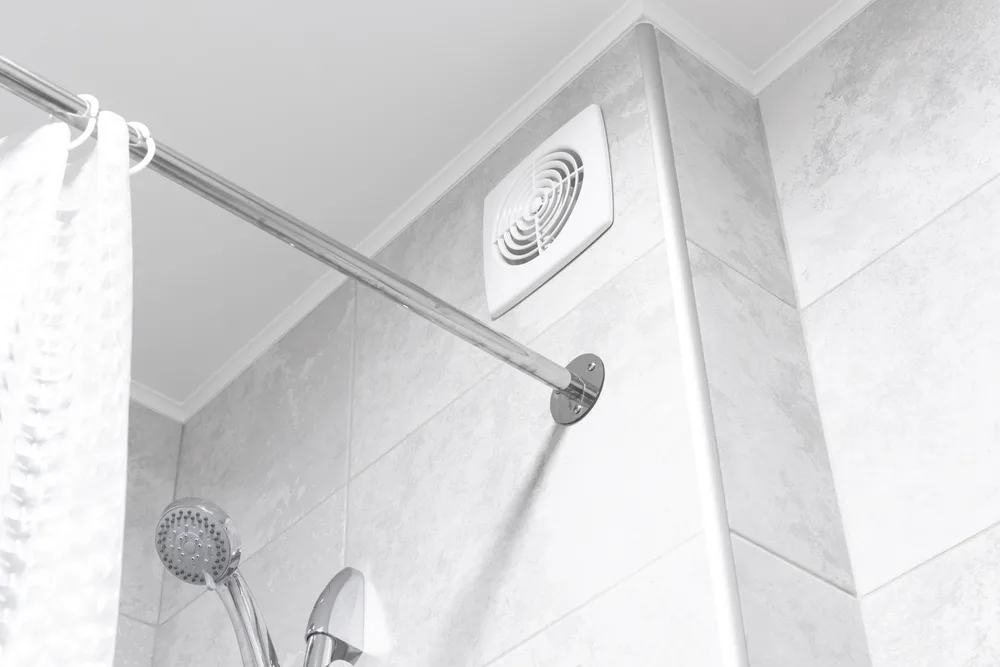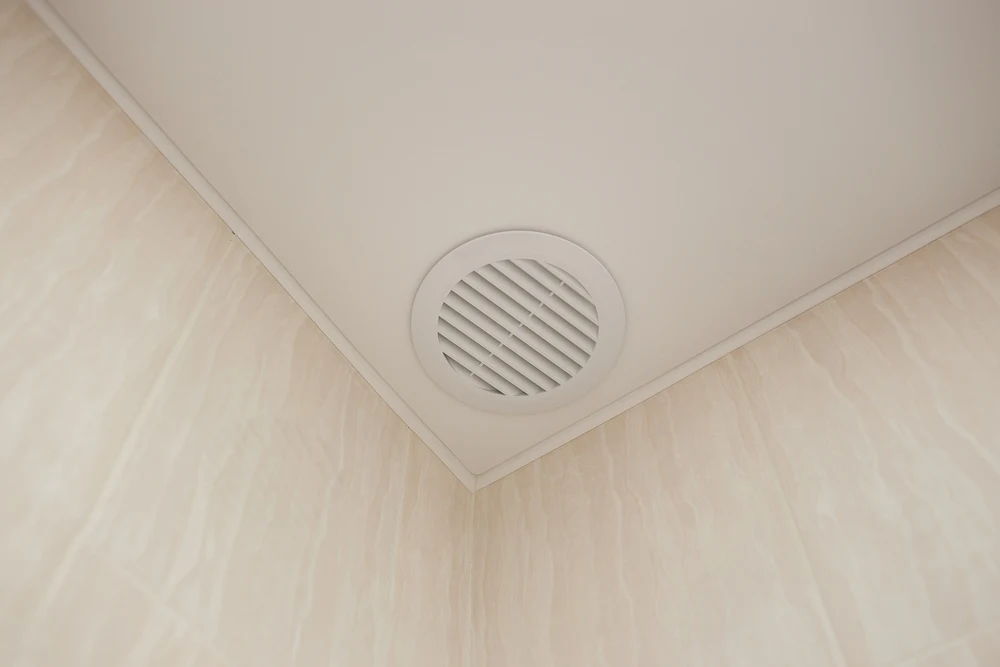We get repeatedly told how important bathroom ventilation is. So, we equip our homes with the best bathroom exhaust fans we can find. When we go on holiday, we rarely think about these things. Still, you may have noticed that most hotel bathrooms do not have exhaust fans.
Is hotel ventilation reliable? Or should you be worried about stale air and odors flowing between different bathrooms? Keep reading to find out how exactly does hotel bathroom ventilation work.

Hotel bathroom fans vent into a central duct (part of a central climate control system) and out through a roof vent. Instead of exhaust fans in each room, hotels use inline fans that service multiple rooms at once. Cross-contamination of air is prevented by the power of the inline fans and backdraft dampers.
Are Hotel Bathroom Vents Connected?
Hotels typically vent their bathrooms through a central climate control system, which provides both humidity and temperature control. Therefore, the different bathroom vents are connected, but not directly.

Such a system can remove moisture and odors without letting the air flow freely between different bathrooms. Restricting airflow in this way is fundamental for any central climate control system.
The reasons are obvious. Nobody wants to pay for a hotel room and then smell toilet odors from other bathrooms. It would also be problematic for the humidity levels, as steam from your neighbor’s shower could end up in your bathroom.
Plus, it is generally safer not to let the stale airflow to other people’s rooms. Not only does it ensure that the air you breathe is fresh, but it also protects you in case your neighbors are ill.
Hotels Have Central Exhaust Vents
In order to reach good indoor air quality standards, every bathroom should have an exhaust fan. This applies especially when the bathroom is without access to natural ventilation (windows). Yet, it is pretty rare to see an actual exhaust fan in a hotel bathroom. So how is the moisture removed from there?
While hotels have a similar basic design layout to apartments, the whole process of hotel bathroom ventilation is slightly more complicated than the ventilation of apartment buildings.
Instead of having an exhaust fan in each bathroom, hotels have central exhaust vents. Otherwise, the ventilation system would be unnecessarily complicated, loud, and cost-ineffective. Not to mention most hotel bathrooms are built in places without easy access to an outside wall.
This means that hotel bathrooms don’t vent directly outside. Instead, each bathroom vent joins to a central duct. This then typically leads to the roof or side of the building and vents the air outside.
What Stops Air Flowing Between Bathrooms?

As we mentioned, hotels typically have a central exhaust duct via which the old air can be extracted outside. Since the bathrooms don’t usually have their own individual exhaust fans, they need to have inline fans.
These are the fans that are mounted inline, meaning they’re either inside the ducting or connected to it. This allows them to be connected to and service multiple bathrooms.
Inline fans also tend to be more powerful than regular exhaust fans, so they are more suitable for hotels.
The position of these fans positively affects the reliability and effectiveness of the whole system. The powerful pull of the inline fan draws the air to the central duct.
It also helps the exhausted air to stay on course. So, rather than flowing to different bathrooms, the air flows directly to the extract outlet via the main duct.
Inline fans are specifically designed to work well with ducting. Due to this thought-out engineering, they have the capacity to maintain airflow even when the extract outlet is distant—as it usually is in hotels since it’s often located on the roof.
Installation of backdraft dampers is another precaution commonly taken in order to stop air from flowing where it’s not supposed to.
Not every backdraft damper is the same. They come in various shapes, models, and with various mechanisms, but their goal is the same—to stop unwanted air from blowing or getting sucked into a room.
In this case, they serve to ensure efficient airflow in the hotel ducting and eliminate any potential cross-contamination of bathroom air.
Systems Can Fail or Leak
Backdraft dampers don’t provide perfect protection. Their improper installation or maintenance, low quality of materials, and wear and tear over time can result in a broken damper.
They can crack or get corroded or stuck, which could cause air leaks. Another thing that may lead to cross-contamination of bathroom air is a failure of the damper’s seal.
The seal can crack or loosen up and slip due to its age or due to becoming overgrown by mold and mildew. Once the seal is compromised, it is no longer airtight. Therefore, it might let in unwanted “dirty” air.
Alternatively, the venting system deficiencies could be caused by the ducting itself. Ducts can crack and leak, causing the air to seep through similar cracks into other parts of ducting and potentially cause problems with the air quality.
Duct leakage could also lead to high energy bills and low efficiency of the whole system. It causes it to work harder, and thus, the system becomes more vulnerable and prone to damage.
Smoking in Hotel Bathroom: Is It Noticeable?
We already know the verdict on whether smoking in your house bathroom is noticeable or not—it is! But what about hotels?
Smoking in your hotel room or bathroom can get you into a lot of trouble. The hotel may charge you a hefty smoking fee if you get caught. So, it is only natural to wonder whether you will get noticed if you decide to smoke in a hotel bathroom.
In theory, the hotel’s central climate control system should ensure that smoking in your bathroom won’t draw the attention of any other guests, right?
While your bathroom neighbors may get a whiff of cigarette smoke in some cases, they likely won’t be the cause of you getting noticed. There are other prevalent signs that show you broke the no-smoking rule.
The smoke will permeate the cloth and furniture in the bathroom. It will likely spread into the main room as well. There it can stink up the curtains or sheets. Thus, it is safe to say that there is a very good chance the hotel employees will notice that you smoked inside.
Another problem is that you may trigger a smoke detector. Some hotels install these detectors in both the bedroom and the bathroom.
You are not completely safe even if the bathroom does not have an alarm in it. When there is enough smoke, it could potentially seep through the door and trigger the detector in the main room.
There is no faster way to get caught smoking than triggering a smoke detector and possibly activating any water sprinklers that may be connected to it.
Overall, it is better to be on the safe side and not smoke in a hotel bathroom. It is more respectful to your neighbors as well as the hotel employees and future guests who will be accommodated in your room.
Sources
https://www.pureventilation.com.au/how-does-an-inline-fan-work/
